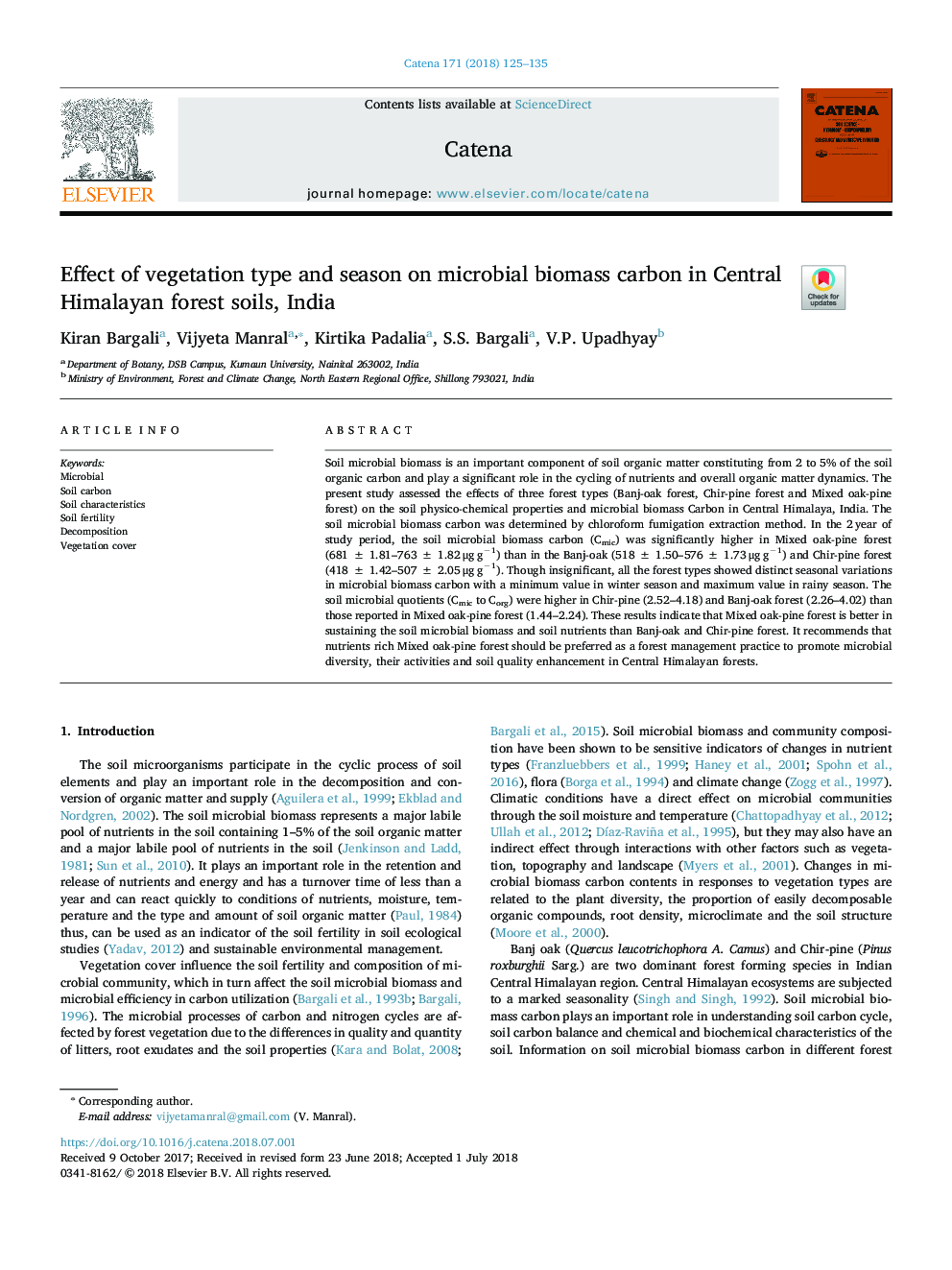| Article ID | Journal | Published Year | Pages | File Type |
|---|---|---|---|---|
| 8893340 | CATENA | 2018 | 11 Pages |
Abstract
Soil microbial biomass is an important component of soil organic matter constituting from 2 to 5% of the soil organic carbon and play a significant role in the cycling of nutrients and overall organic matter dynamics. The present study assessed the effects of three forest types (Banj-oak forest, Chir-pine forest and Mixed oak-pine forest) on the soil physico-chemical properties and microbial biomass Carbon in Central Himalaya, India. The soil microbial biomass carbon was determined by chloroform fumigation extraction method. In the 2â¯year of study period, the soil microbial biomass carbon (Cmic) was significantly higher in Mixed oak-pine forest (681â¯Â±â¯1.81-763â¯Â±â¯1.82â¯Î¼gâ¯gâ1) than in the Banj-oak (518â¯Â±â¯1.50-576â¯Â±â¯1.73â¯Î¼gâ¯gâ1) and Chir-pine forest (418â¯Â±â¯1.42-507â¯Â±â¯2.05â¯Î¼gâ¯gâ1). Though insignificant, all the forest types showed distinct seasonal variations in microbial biomass carbon with a minimum value in winter season and maximum value in rainy season. The soil microbial quotients (Cmic to Corg) were higher in Chir-pine (2.52-4.18) and Banj-oak forest (2.26-4.02) than those reported in Mixed oak-pine forest (1.44-2.24). These results indicate that Mixed oak-pine forest is better in sustaining the soil microbial biomass and soil nutrients than Banj-oak and Chir-pine forest. It recommends that nutrients rich Mixed oak-pine forest should be preferred as a forest management practice to promote microbial diversity, their activities and soil quality enhancement in Central Himalayan forests.
Related Topics
Physical Sciences and Engineering
Earth and Planetary Sciences
Earth-Surface Processes
Authors
Kiran Bargali, Vijyeta Manral, Kirtika Padalia, S.S. Bargali, V.P. Upadhyay,
